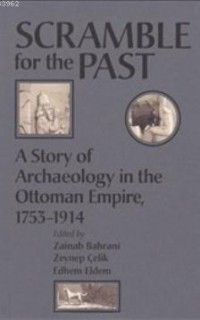
Scramble for the Past; A Story of Archaeology in the Ottoman Empire 1753-1914
| ISBN | 9789944731270 |
| Yayınevi | Salt Published |
| Yazarlar | Edhem Eldem (author) | Zeynep Çelik (author) | Zainab Bahrani (author) |
| Kitap Tanıtımı | When, at the turn of the nineteenth century, Lord Elgin stripped the Parthenon of its sculptures and carried them to England, he saw himself as both preserving classical art for posterity and claiming the rightful heritage of the west. And when, soon after, the French government purchased an armless statue of Aphrodite on the island of Melos and displayed it triumphantly in the Louvre, it too identified France as the natural heir of antiquity. The Austrians and Germans, for their part, unearthed and brought home vast quantities of sculpture and architecture from throughout the Near East. Beginning in the mid-eighteenth century, European scholars and amateurs poured into Greece, Turkey, Egypt, Syria, Lebanon, and Mesopotamia to explore, dig, catalogue, and cart home the material remains of the ancient world. The collections they amassed became celebrated museums; the scholarly techniques they developed formed the foundation of modern, scientific archaeology. But at the time, the lands they traversed and the antiquities they found belonged neither to the empires of Europe nor to local states; rather, the entire territory was the possession of the Ottoman Empire. What did the Ottomans think of the European passion for die past? What was their own view of the ancient world and its heritage? |
Kütüphaneniz